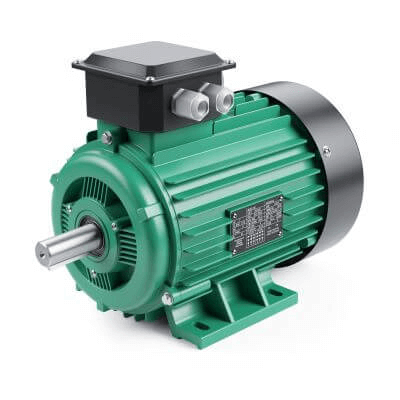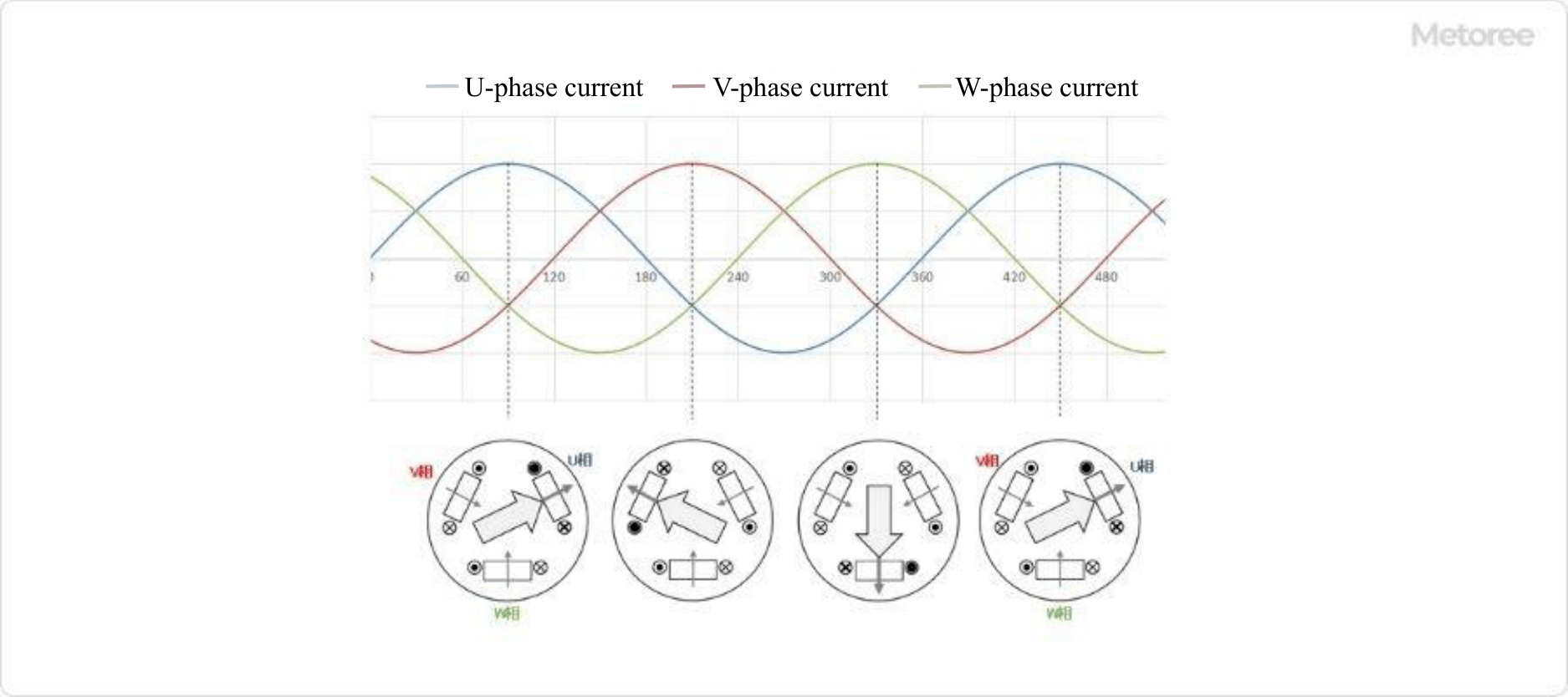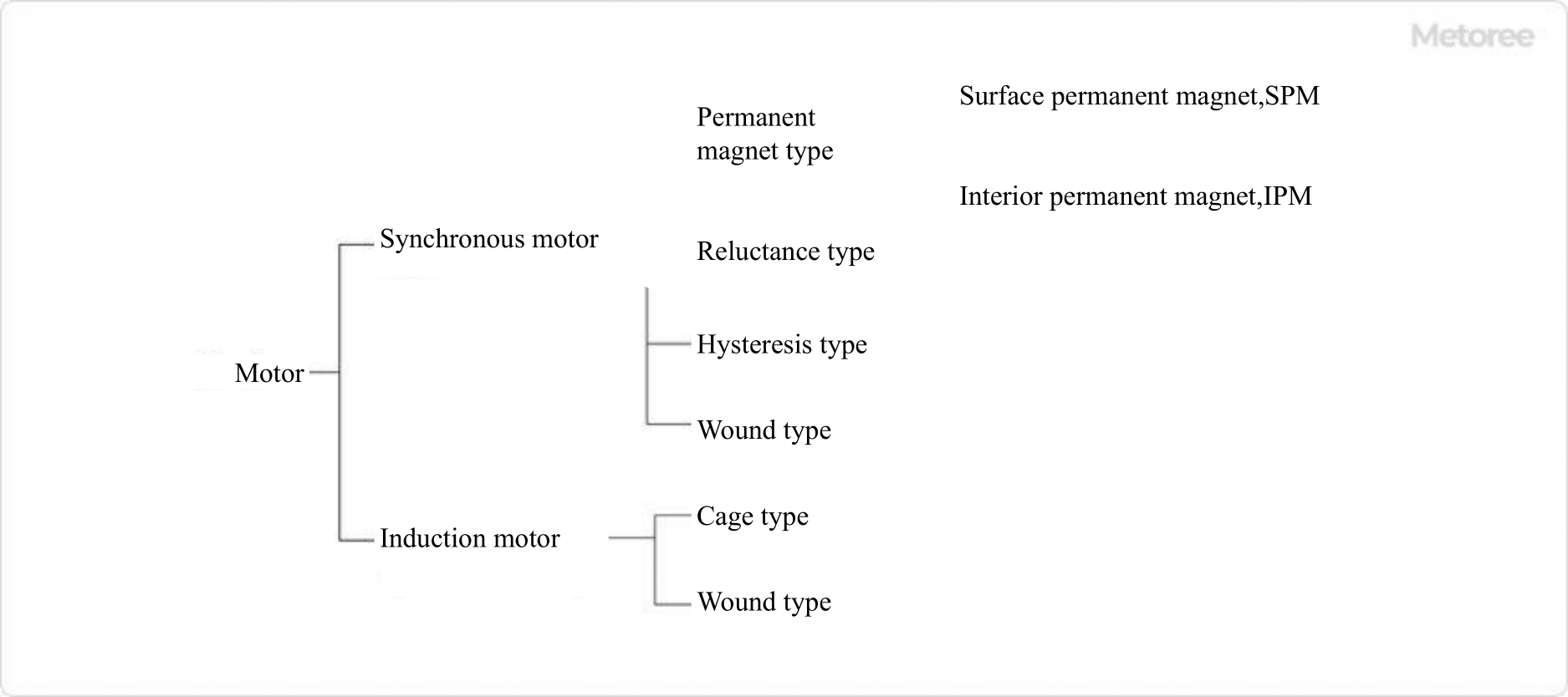What Is an AC Motor?

An AC motor is an electric motor that is driven by an AC power source.
AC stands for alternating current, which is a current with a frequency that switches between positive and negative over time. A power supply that outputs such a current is called an alternating current power supply (AC power supply).
AC motors are largely composed of a stator and a rotor.
- Stator: A coil wound on an electromagnetic steel plate.
- Rotor (rotor): A rotor core made of electromagnetic steel sheet with aluminum and coil windings to form a cage-like structure of conductors.
An electric motor driven by a direct current power source is called a direct current motor or DC motor (English: direct current motor).
Uses of AC Motors
AC motors are used to rotate equipment such as pumps in factories, conveyors, rollers, and fans. They are used by connecting the equipment (rollers, etc.) to be rotated, and the shaft of the rotor with a device called a coupling.
Compared to DC motors, which are driven by a DC power source, AC motors are widely used because they are easier to maintain and do not have brushes, which are consumable devices.
In recent years, AC motors have become more widely used because they allow speed control, which was once considered easier with DC motors.
Principle of AC Motors

Figure 1. The principle of rotating magnetic field generation
In AC motors, a 3-phase AC power supply, out of phase by 120 degrees, is applied to the stator coil, and the current flowing through the coil causes the electromagnetic steel plate to become an electromagnet, forming a magnetic field in the motor (the right-hand thread’s law determines the polarity of the electromagnet. The polarity of the electromagnet is determined by the right-hand screw law.)
Since the AC power supply is shifted in phase with time, the position of the magnetic field rotates with time, and this is called a rotating magnetic field. As the magnetic field rotates, eddy currents are generated in the rotor, and the eddy currents and the magnetic field generate a rotating force that causes the rotor to rotate (Fleming’s left-hand rule determines the direction of rotation). This principle of rotation uses the principle of Arago’s disk.
The number of stator poles is called the number of poles and is expressed as 2-pole or 4-pole. The speed of the rotating magnetic field Ns is determined by the number of poles p and the frequency f of the power supply p. The speed N of the rotor has a lag, called slip s, relative to the rotating magnetic field, which can be obtained by the formula N = 120f (1 – s) / p. s)/p. The rotational torque of an electric motor is inversely proportional to the speed of the rotating magnetic field and is maximum when the motor starts.
Types of AC Motors

Figure 2. Types of AC motors
AC motors are mainly classified as shown in Figure 2.
They are broadly divided into synchronous motors and induction motors, but can also be classified according to the type of AC power source.
- Single-phase AC motors
These motors are powered by 100 VAC, as distributed to households. Motors used in home appliances, such as washing machine motors, are classified in this category. - Three-phase AC motors
This category includes motors for pumps and conveyors that run on a three-phase power supply, such as those used in factories. In Japan, AC200V is the mainstream.
AC motors can also be driven from DC power sources. In this case, an inverter that converts DC to 3-phase AC is used together.
1. Synchronous motor
A synchronous motor is a motor in which there is no slippage (synchronization) between the rotating magnetic field and the rotor, and whose rotational speed is determined by the number of poles in the motor and the frequency of the power supply.
Synchronous motors are classified into various types according to the construction of the rotor, but here we will discuss the permanent magnet type, which is relatively commonly used.
Permanent magnet-type synchronous motors have magnets in the rotor core and rotate when the magnetic field of the magnets synchronizes with the rotational magnetic field of the power supply.
Magnets fixed to the surface of the rotor core are called Surface Permanent Magnets (SPM), while those embedded in the rotor core are called Interior Permanent Magnet (IPM).
2. Induction motor

Figure 3. Rotor structure of induction motor
Induction motors are also called induction motors or asynchronous motors.
Induction motors are characterized by a slightly slower rotor speed than synchronous motors (i.e., the rotation speed of the power supply is asynchronous with the rotation speed of the rotor).
Figure 3 shows the rotor structure of an induction motor. As shown in the figure, induction motors are generally composed of aluminum or other conductors in a cage shape.
The rotating magnetic field from the AC power source generates an induced current in the cage-shaped conductor based on the principle of electromagnetic induction, and Fleming’s law states that a force is generated by the action of the current and magnetic field. This force causes the AC motors to rotate and move the machine connected to the output shaft.